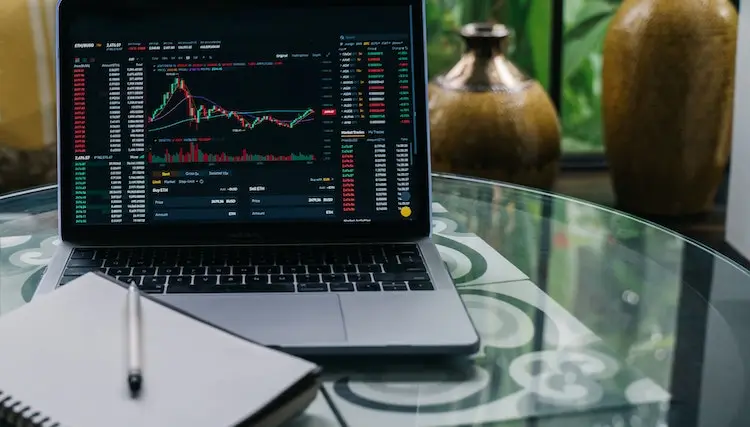Building a Trading Bot: Comprehensive Tutorial
In the era of technological advancement, trading bots have emerged as a fascinating blend of finance and programming. These are algorithms programmed to execute trades on behalf of a human trader.
By eliminating the emotional component of automated crypto trading and allowing for rapid, 24/7 operations, they’ve carved a niche in the trading universe. This article unravels the journey of creating a trading bot.

History of Trading Bots
Trading once involved crowded exchange floors and frantic calls, but the landscape has dramatically transformed. With the inception of electronic trading, the door opened for algorithmic trading.
By the late 2000s, a significant chunk of trading volume came from these automated systems. Today, they’re indispensable, with trading bots being their more accessible offspring for retail traders.
Understanding the Basics
Building a trading bot isn’t just about coding; it’s about integrating financial strategies into an algorithm. Understanding these strategies deeply can set the foundation for a more robust bot:
Trend Following: Here, indicators like moving averages and momentum oscillators can be crucial. Understanding the mathematical models behind these indicators can allow for more nuanced strategies.
Mean Reversion: This usually involves deep statistical analysis, often employing tools like Z-scores to measure how far off a value is from its mean. Machine Learning techniques can also be used to predict mean reversions based on historical data.
Statistical Arbitrage: Arbitrage opportunities arise from price imbalances and often require speedy execution. A deep understanding of market microstructure is invaluable here. You can also incorporate statistical methods like cointegration.
High-Frequency Trading (HFT): This demands ultra-low latency and high-speed execution. Deep knowledge of data structures and algorithms, like order matching algorithms, is essential for HFT bots.
Understanding key concepts is equally crucial:
API (Application Programming Interface): Knowing how to fetch real-time data, send trade orders, and manage positions through API calls can make or break your bot’s efficiency.
Backtesting: This involves not just running the bot against historical data but also understanding the metrics that will measure its effectiveness—like Sharpe ratio, maximum drawdown, and win-loss ratios.
Slippage: Recognizing how market conditions can affect slippage and incorporating this into your bot can lead to more accurate performance metrics.
Liquidity: Beyond just understanding, your bot needs to evaluate liquidity in real-time to avoid poor trade executions that can arise from low liquidity.
Choosing the Right Platform and Programming Language
The foundation of any trading bot is the platform and language. For starters, platforms like MetaTrader 4/5, NinjaTrader, and cTrader are popular for their user-friendliness and robust features.
On the other hand, Python emerges as a frontrunner in languages due to its simplicity and vast libraries. MQL is essential for MetaTrader users, while those seeking more intricate features may turn to Java or C#. A user-friendly UI is a cherry on top, ensuring smooth navigation and monitoring.
Setting Up Your Development Environment
The right development environment is crucial not just for effective coding but also for debugging, testing, and even disaster recovery:
Software and Tools: Beyond the text editor or IDE, you may need databases to store historical data for backtesting, debugging tools, and libraries specific to both trading and the language you’re using.
Broker API Connection: Consider using a sandbox environment first to test the connectivity. Make sure the API offers all the functionalities you need—from fetching price and order book data to placing and canceling orders.
Developer Community: Forums, GitHub repositories, and Stack Overflow can offer valuable insights. Remember, trading bots are complex; the collective wisdom of a community can prove invaluable.
Developing the Bot: Step-by-Step
Strategy Design: It starts with a spark – a trading idea. Formulate this idea and transform it into a mathematical model or algorithm. Remember, the quality of data you feed into the system impacts the output.
Coding the Strategy: Convert your strategy into a pseudocode—a basic, logic-driven outline. Dive into the coding process, ensuring your bot can interpret market data, make decisions, and execute trades. As with all coding ventures, debugging is crucial.
Backtesting: With your bot ready, pit it against historical data. It’s a rehearsal, allowing you to identify flaws or inefficiencies. But beware of overfitting—designing a bot that performs exceptionally well on past data but flops in real-time scenarios.
Forward Testing: Simulate real-time trading but with virtual money, allowing you to see the bot’s decision-making in action and fine-tune its strategies.
Risk Management
Risk Management is more than just setting a stop-loss order; it’s a holistic approach:
Position Sizing: Using algorithms like the Kelly Criterion can optimize the size of your trading position based on your strategy’s historical performance.
Leverage: Understanding the impact of leverage on your trading capital can prevent catastrophic losses. Your bot should be able to adjust its leverage dynamically based on market conditions.
Exit Strategies: Beyond just stop-loss or take-profit, consider trailing stops, time-based exits, or even volatility-based exits.
Deployment and Monitoring
With the bot tested and risks assessed, it’s time for live action. Deploy it on a live trading account. But the journey doesn’t end there. A bot requires continuous monitoring to ensure it’s operating correctly.
Moreover, the financial market’s dynamic nature mandates periodic reviews and optimizations.
Ethical Considerations and Best Practices
In the race for profits, ethics mustn’t be sidelined. Automated trading must be devoid of market manipulation strategies. Handle errors gracefully, ensuring they don’t snowball into significant financial mishaps.
Lastly, while protecting your bot’s proprietary strategies is essential, transparency in its operations is equally crucial to foster trust.
Conclusion
Trading bots, a testament to the marriage of finance and technology, are here to stay. As they continue to evolve with AI and machine learning, traders should remain adaptive, learning the ropes of both markets and technology.
Building a bot is as much an art as it is science, where continuous learning and ethical trading stand paramount.

